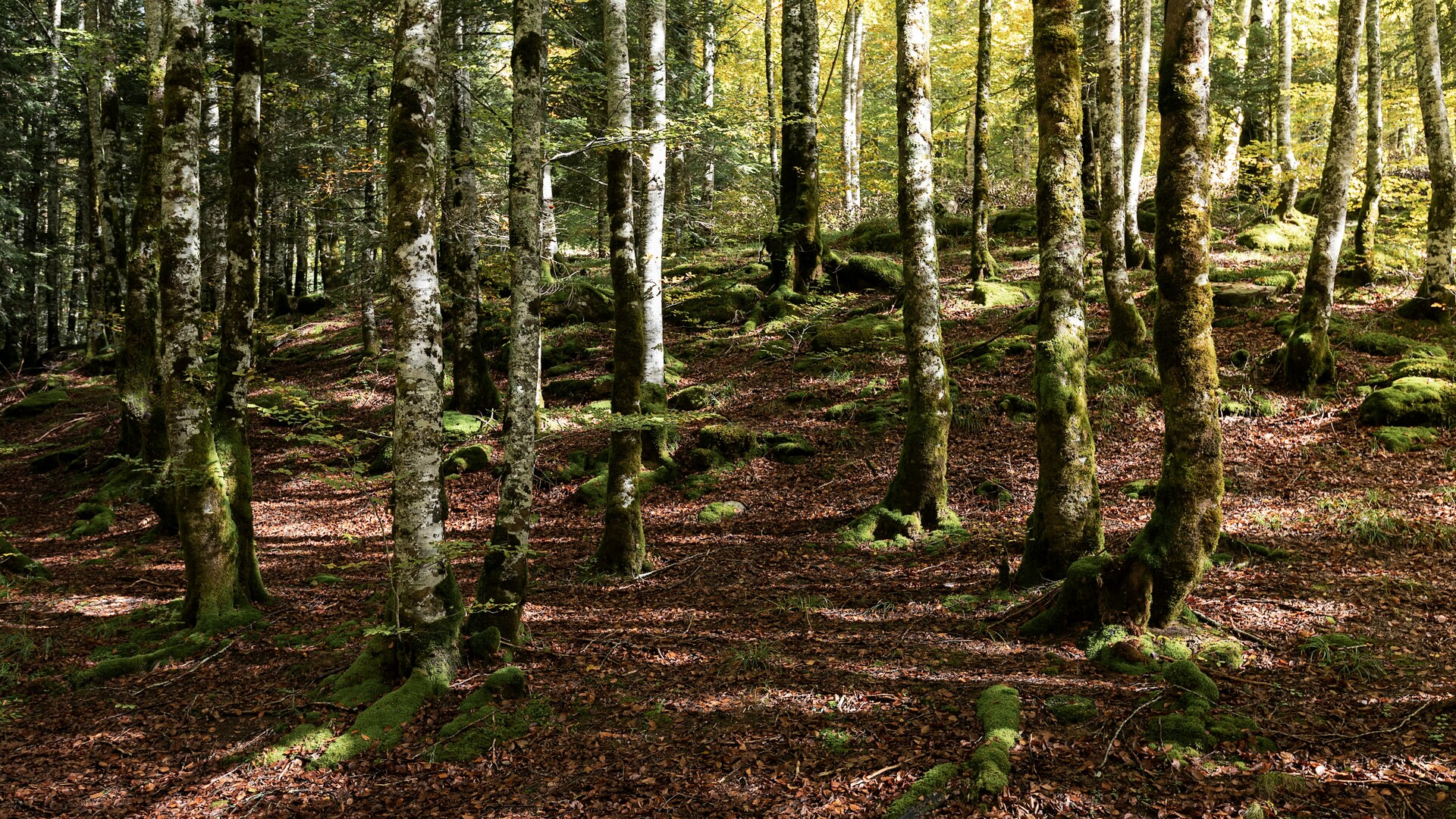 " alt="Partnering with Associació Sèlvans in the protection of old-growth forests in Catalonia">
" alt="Partnering with Associació Sèlvans in the protection of old-growth forests in Catalonia">
Partnering with Associació Sèlvans in the protection of old-growth forests in Catalonia
Grantee: Associació Sèlvans
Location: Spain, Europe
Grant Cycle: 2025 – 2027
Type of Grant: three-year program support,
Delegació a Catalunya, Environment & Biodiversity Protection
Website: selvans.ong
Delegació
a Catalunya
Associació Sèlvans was established in 2005 within the Girona Provincial Council as a programme to configure a network of old-growth and high natural value forests across all counties of Girona, encompassing both private estates and communal forests managed by local entities. In 2011, the project was adopted by the Institute of the Environment at the University of Girona, enabling its expansion throughout the entire Catalan territory. In 2017, Sèlvans was constituted as an association, becoming the sole organization on the Iberian Peninsula with a specialized focus on the conservation of remnant and threatened old-growth forest ecosystems, and on the assessment, valuation, and promotion of the critical ecosystem services they deliver.
Catalan woodlands encompass a wide diversity of forest types, both in species composition and structural complexity, including mixed, deciduous, and evergreen forests, and spanning Mediterranean, Atlantic, and continental environments. While forest cover in the region has expanded significantly over the past century, from a historical minimum to a current maximum, mature and old-growth forests remain exceedingly rare. These ecosystems, once lost, cannot be restored within human timescales, making their conservation essential for long-term ecological sustainability. The presence of a representative network of mature forests within a balanced, multifunctional forest mosaic is vital, as these stands serve critical functions: acting as biodiversity reservoirs, preserving deep and nutrient-rich soils, and regulating hydrological processes.
The main challenges to old-growth forests conservation in Catalonia are multifaceted. First, the lack of specific legal protection leaves them vulnerable to degradation and loss. Second, nearly 80% of the region’s forests are privately owned, which complicates efforts to coordinate and implement broad conservation strategies. Third, forest law and management practices in Catalonia continue to be oriented towards intervention-based approaches and wood production, often resulting in unsustainable exploitation that disrupts the forest mosaic and surrounding landscapes. Additionally, the scope of the issue is vast, encompassing conservation, forestry, health, rural development, and the economy, which requires adaptable, innovative solutions to address these interconnected challenges. Finally, current public financial support is insufficient to effectively tackle these issues, limiting the capacity for meaningful and sustained action.
Sèlvans is actively working to establish a network of centennial forests across Catalonia by conducting thorough assessments and implementing preservation efforts through forest stewardship agreements with private forest owners. The project includes a comprehensive range of activities: conservation and management interventions, research and knowledge development, public use regulation, volunteer initiatives, and educational outreach and communication. All these actions are aligned with the Catalan Natural Heritage and Biodiversity Strategy, ensuring a cohesive approach to forest conservation and sustainable land management.
The project is supported by the Nando and Elsa Peretti Foundation – Delegació a Catalunya (NaEPF), in alignment with its mission to promote environmental protection and biodiversity conservation. The preservation of old-growth forests in Catalonia addresses several critical environmental challenges. These forests contribute significantly to biodiversity conservation within the Mediterranean Hotspot, while also playing a vital role in climate change mitigation and adaptation, as they are among the most resilient to changing conditions. Additionally, they enhance ecosystem resilience against forest fires, as old-growth forests exhibit greater resistance to fire. The combined efforts of the project represent a holistic approach to forest conservation, integrating direct preservation actions with community engagement, scientific monitoring, and sustainable management practices to ensure long-term ecological stability.
Sèlvans project includes two initiatives:
- The first initiative focuses on the Rocacorba Mountains Protected Natural Space. The Government specifically targets recognized natural “protected” areas in Catalonia lacking effective government management bodies, providing funding to NGOs to manage and improve these areas in collaboration with local municipalities. The project will establish preliminary protection of 500 hectares of high natural value landscapes through framework stewardship agreements, including forest management plans and municipal-level planning. Additionally, it will implement high protection and/or restoration measures across 128 hectares through applying the “Triple Resilience Approach”. This approach involves: reopening and maintaining strategic open spaces (21.33 hectares), conditioning dense young forest structures (21.11 hectares), and preserving old-growth forests (42.44 hectares through voluntary conservation and 43 hectares through direct payment for ecosystem services to forest owners).
- The second initiative focuses on promoting forest sanctuaries across Catalonia, expanding the conservation model to a broader geographical scale. Sèlvans aims to establish three pilot forest sanctuaries, protecting 200 hectares of high-value forests in three key strategic geographical areas. This involves active project management by Sèlvans, including building strategic partnerships with regional authorities and local stakeholders, as well as direct payment for ecosystem services to forest owners.
The project aims to protect and/or restore a minimum of 828 hectares of old-growth forests and high ecological value landscapes. It will actively involve between 18 and 42 forest owners, along with other key stakeholders, including municipalities, natural space management offices, and the Catalan Government.
